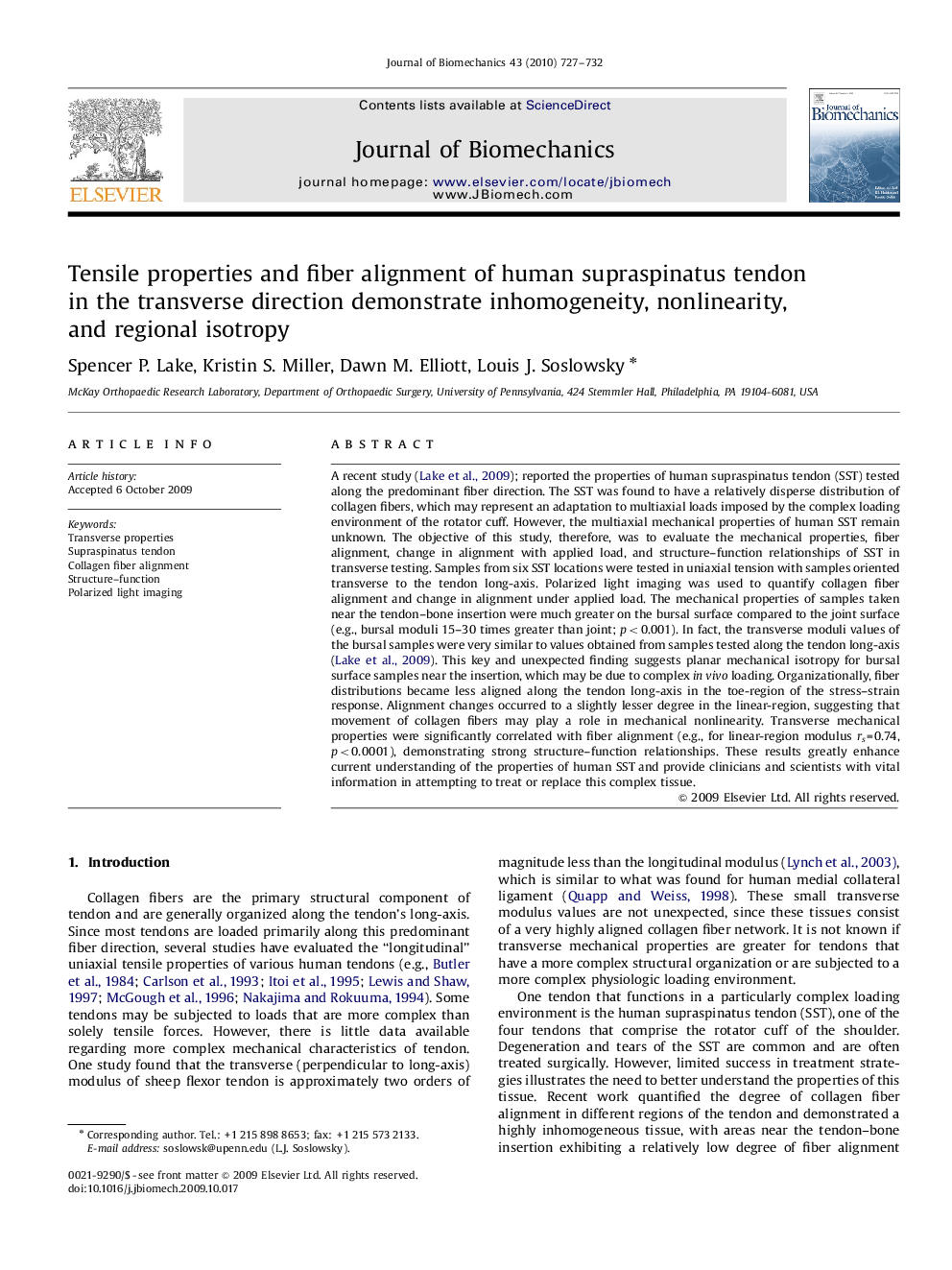| کد مقاله | کد نشریه | سال انتشار | مقاله انگلیسی | نسخه تمام متن |
|---|---|---|---|---|
| 10433479 | 910297 | 2010 | 6 صفحه PDF | دانلود رایگان |
عنوان انگلیسی مقاله ISI
Tensile properties and fiber alignment of human supraspinatus tendon in the transverse direction demonstrate inhomogeneity, nonlinearity, and regional isotropy
دانلود مقاله + سفارش ترجمه
دانلود مقاله ISI انگلیسی
رایگان برای ایرانیان
کلمات کلیدی
موضوعات مرتبط
مهندسی و علوم پایه
سایر رشته های مهندسی
مهندسی پزشکی
پیش نمایش صفحه اول مقاله

چکیده انگلیسی
A recent study (Lake et al., 2009); reported the properties of human supraspinatus tendon (SST) tested along the predominant fiber direction. The SST was found to have a relatively disperse distribution of collagen fibers, which may represent an adaptation to multiaxial loads imposed by the complex loading environment of the rotator cuff. However, the multiaxial mechanical properties of human SST remain unknown. The objective of this study, therefore, was to evaluate the mechanical properties, fiber alignment, change in alignment with applied load, and structure-function relationships of SST in transverse testing. Samples from six SST locations were tested in uniaxial tension with samples oriented transverse to the tendon long-axis. Polarized light imaging was used to quantify collagen fiber alignment and change in alignment under applied load. The mechanical properties of samples taken near the tendon-bone insertion were much greater on the bursal surface compared to the joint surface (e.g., bursal moduli 15-30 times greater than joint; p<0.001). In fact, the transverse moduli values of the bursal samples were very similar to values obtained from samples tested along the tendon long-axis (Lake et al., 2009). This key and unexpected finding suggests planar mechanical isotropy for bursal surface samples near the insertion, which may be due to complex in vivo loading. Organizationally, fiber distributions became less aligned along the tendon long-axis in the toe-region of the stress-strain response. Alignment changes occurred to a slightly lesser degree in the linear-region, suggesting that movement of collagen fibers may play a role in mechanical nonlinearity. Transverse mechanical properties were significantly correlated with fiber alignment (e.g., for linear-region modulus rs=0.74, p<0.0001), demonstrating strong structure-function relationships. These results greatly enhance current understanding of the properties of human SST and provide clinicians and scientists with vital information in attempting to treat or replace this complex tissue.
ناشر
Database: Elsevier - ScienceDirect (ساینس دایرکت)
Journal: Journal of Biomechanics - Volume 43, Issue 4, 3 March 2010, Pages 727-732
Journal: Journal of Biomechanics - Volume 43, Issue 4, 3 March 2010, Pages 727-732
نویسندگان
Spencer P. Lake, Kristin S. Miller, Dawn M. Elliott, Louis J. Soslowsky,